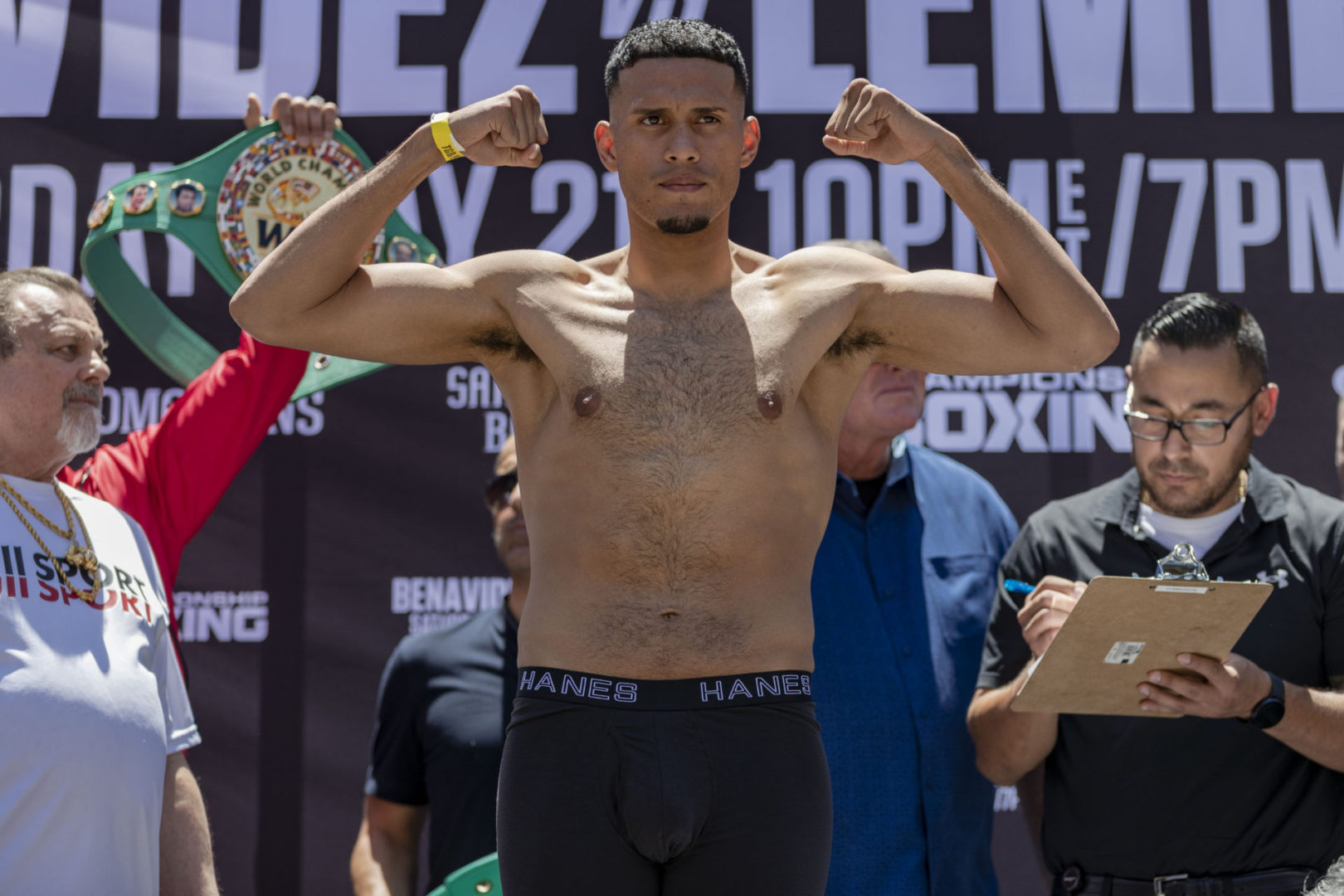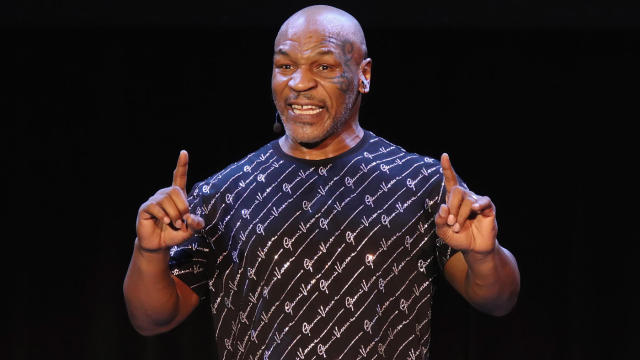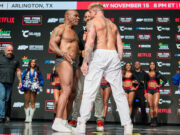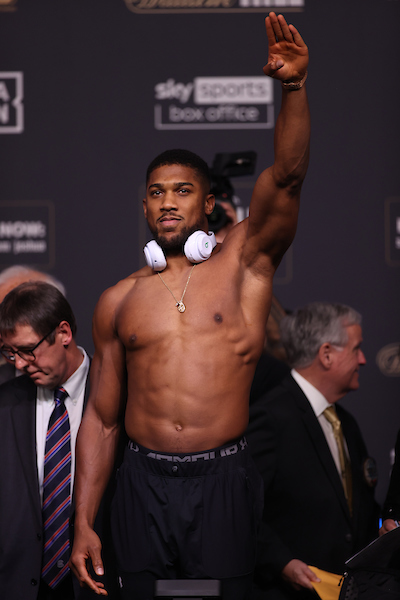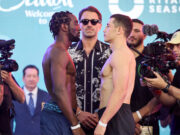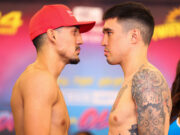The most memorable knockout punches resemble nothing so much as upper-deck homeruns. Arizona Diamondbacks commentator Mark Grace is fond of pausing over the point of impact that precedes each upper-deck homerun to emphasize its pitch’s certain whereabouts: belt-high, over the plate.
So it goes with knockout blasts and their victims’ hands at the point of impact: belt-high, chin well off the chest. Gone!
So it went Saturday in Atlantic City’s Boardwalk Hall when middleweight champion Sergio “Maravilla” Martinez found Paul Williams’ chin over the plate, at 1:10 of round 2 in their rematch, and connected with boxing’s upper-deck blast of 2010. Williams landed forehead-first on the mat, eyes open. He didn’t move for the entirety of referee Earl Morton’s 10-count.
With one punch, Martinez solidified his place as Fighter of the Year – one who outclassed the ghost of Kelly Pavlik in April and made Williams a highlight-reel fixture seven months later. If there is a downside to having as boxing’s middleweight champion of the world a Latino who both looks and fights better than Oscar De La Hoya, it doesn’t spring to mind. In other words, ¡Viva El Maravilla!
Something else best knockout punches have in common with best homeruns is the way they induce a spontaneous sort of awe. Two adversaries engage in a duel neither is winning by more than a slight margin, and then in an unexpected flash of violence, one establishes a degree of superiority over the other impossible to imagine even an instant before.
Get a tape of Martinez-Williams II and take a look at the first second of Williams’ unconsciousness, just as his body bends in two, just before it tilts leftwards. You’ll count no fewer than 21 dropped jaws at ringside. That is, 21 persons who care enough about the sport to be within 30 feet of a middleweight championship fight show physical surprise. It is involuntary. Before any can register the consequences of what’s happened, leaping from his seat or dropping his head in his hands, each person’s brain sends a signal of wonder to his body.
This is different from a homerun looped round the foul pole in the 11th pitch of an at-bat. This is different from a homerun that sneaks over the leather fingers of the right fielder’s outstretched glove. It’s different in the same way that Martinez’s knockout is different from an eighth-round corner stoppage or even a spot of unconsciousness induced by a shower of five blows to the head.
This was an 0-1 fastball thrown by a power pitcher. Belt-high. Over the plate. Gone.
It sure saved Earl Morton’s night. Morton, a veteran referee, was handling the first four minutes of the fight like a juror hoping to invoke a mistrial. He was well out of position several times. And in the opening 30 seconds of round two, instead of breaking the fighters he actually grabbed hold of Martinez’s right arm, from behind, and got pulled into the corner.
Pierre Benoist, the judge who watched Martinez and Williams trade rounds in their first fight but nevertheless turned-in the 119-110 (Williams) practice card he’d worked on the night before, was not invited to score the rematch. His spirit, though, was everywhere. This fight was going to go Williams’ way, do not doubt, if it was close.
After conceding weight, venue and officials the way a middleweight champion should never have to, though, Martinez showed the rest of the prizefighting world – with its myriad of beltholders and businessmen – what a world champion looks like. He did it the right way, stretching his opponent like a landed fish.
After a close first round that some scored for Martinez on clean punching but HBO commentator Manny Steward enthusiastically scored for Williams, Martinez weathered Referee Morton’s intervention and got to center ring. He bounced backwards, planted, tucked his chin and threw from his southpaw stance a short left cross to make Mike Tyson smile. All night, Martinez followed, purposefully or not, Tyson’s blueprint for fighting a taller man whose chin you suspect: Shorten, don’t lengthen, your punches, and commit to them all the way.
But Martinez launched himself at Williams with a degree of athleticism even Tyson might envy. He caught Williams just right. And in boxing, “just right” means to catch an opponent turning his own fully committed punch your way. Williams’ high chin got snapped to his left shoulder, and when it returned to its proper place, Williams’ brain was disengaged from the rest of his person. He was unconscious well before he was extended across the canvas.
Martinez’s homerun trot was a vision of its own. Uncommonly certain of what he’d done, Martinez actually had his right glove in the air before Williams’ head touched the mat. It was not Barry Bonds’ heroic pose or Sammy Sosa’s exuberant hop. Rather, it was Manny Ramirez tearing open the velcro on his batting gloves before leaving home plate. Gone.
One can only imagine the jolt writers at ringside felt. A chat with HBO unofficial scorer Harold Lederman in Texas a couple weeks ago had him impart that punch velocity is lost on television. So, too, is punch sound. A replay of Pacquiao-Margarito preceded Martinez-Williams II, Saturday, and I can tell you the sixth round – one Pacquiao said he was lucky to survive – was nowhere near suspenseful on television, even in high definition, as it was in person.
But television – HBO specifically – is a good place to insert a final note on Sergio Martinez’s first defense of his middleweight title. To wit:
Martinez is a humble star. Be careful with him. Don’t put him on pay-per-view. Rebuild your “Championship Boxing” brand around him. Don’t maneuver him towards Golden Boy Promotions. Be an honest broker for his best interests and those of boxing, realizing such things can converge. Martinez can be the crossover sensation you’ve longed for. Make the most of him.
Bart Barry can be reached at [email protected]. Additionally, his book, “The Legend of Muhammad Ali,” co-written with Thomas Hauser, can be purchased here.



